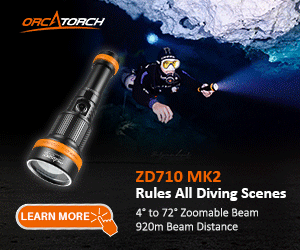Are pony bottles dangerous?
IMO, the safety benefits of properly used pony bottle FAR outweigh any hazards. Having more air gives you far more of an opportunity to resolve all kinds of situations, including OOA, but also entanglements and various other unexpected hazards with may throw off your dive plan. Using your dive buddy as a mobile pony-bottle is perhaps an accident waiting to happen, if they're not there when you need them.
There are a few hazards
(see below), but I think they're minor and easily addressed, and far outweighed by all the benefits of "I have backup air." IMO, a pony bottle is not complicated either, less complicated than an octo, which is standard equipment for new open water divers. If anything, the real hazard is that divers really aren't taught about pony-bottles in beginner-to-intermediate classes, which can lead to making fairly simple mistakes, that are very simple to avoid.
What are the hazards of pony bottles?
1)
Inadequately sized or underfilled pony bottle for the task. Though the small pony on you is better than the large pony left at home.
2)
Improper use, such as a dive-extender, or pursuing more dangerous dives.
3) "
Spare Air" (3cu or smaller) actually are dangerous IMO. This is the same as (1), but worth a special call-out. Having actually used both a 1.7 and 3cu spare air, I was shocked at how quickly these ran out of air, in only a few breaths swimming a 20ft. The reason I called these dangerous, is that they have too little air to be useful, and any diver using them probably has a false sense of security.
4)
Using wrong regulator - A diver may mistakenly start a dive with their pony bottle, run OOA quickly on the pony, then reach for their pony only to be confused why it's not there.
5)
Pony Off - If the pony is turned off before or during the dive, it must be turned on to be used, and may not be immediately available.
6)
Donating Air - If donating air, the pony may not have adequate supply for the dive buddy or yourself.
What safety advice would you give to someone using a pony bottle?
Practice: Each dive, switch to your pony mid dive for a few breaths. This helps verify it's where you expect, build muscle memory, and verify it's working.
Leave it On: Don't unnecessarily dive with the pony bottle turned off. You might as well leave it on. (see next tip)
Transfill: Use a transfill whip to top off your pony. That way it's always full, you don't have to pay fill costs, and don't mind leaving it on.
Sling or "Sidemount": A slung or "SideMounted" pony is usually easier to access, can be detached, and mitigates other issues like accidentally using the wrong regulator. However, a backmount pony won't kill you (I'm sure plenty of people here have advice for BM usage).
Retainers: Using some form of regulator retainer, or perhaps proper long-hose use, means your regulators are always where you expect them to be.
What other advice (sizing, selection, configuration, etc) would you give for pony bottle use?
I have a
long post here about this exact subject.







